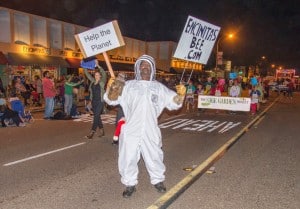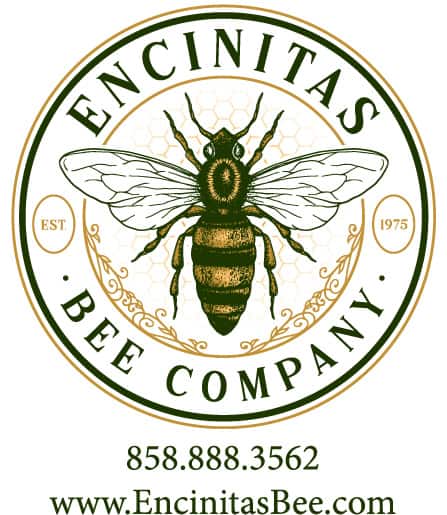 beeThe British Beekeepers Association (BBKA) attributes its worst losses of honeybees ever recorded to weather, but is that entirely true? Has the association confirmed entirely that weather is the cause? What about pesticides? The level of honeybee colony losses across England has more than doubled since last year, up to 33.8% from 16.2% in 2012. More than one third of all honeybee colonies in England died over the winter. In the south-west of England, more than half of all colonies were wiped out and in the northern part of England, 45.4 % disappeared. Scotland and Wales have also recorded a dramatic loss over the winter. What’s even worse is that the death toll for bees in England could be higher, since the BBKA survey of 846 members closed at the end of March before the arrival of spring.
beeThe British Beekeepers Association (BBKA) attributes its worst losses of honeybees ever recorded to weather, but is that entirely true? Has the association confirmed entirely that weather is the cause? What about pesticides? The level of honeybee colony losses across England has more than doubled since last year, up to 33.8% from 16.2% in 2012. More than one third of all honeybee colonies in England died over the winter. In the south-west of England, more than half of all colonies were wiped out and in the northern part of England, 45.4 % disappeared. Scotland and Wales have also recorded a dramatic loss over the winter. What’s even worse is that the death toll for bees in England could be higher, since the BBKA survey of 846 members closed at the end of March before the arrival of spring.
The BBKA attributed the extreme death rates to the poor weather during 2012 continuing into 2013, and accelerated by the late arrival of spring, but the bee losses come just weeks after European Union member states voted for a suspension of three pesticides that were shown to be linked to mass bee deaths.
It was the worst summer ever. I had my own bees starving to death in the summer. It is nothing to do with pesticides; bad weather is enough of an explanation. It’s not healthy for bees to be trapped in their hives during the summer. Some queen bees couldn’t get out to mate and confined bees are more likely to get nosema and viruses from the varroa mite” – Francis Ratnieks, professor of apiculture at University of Sussex
These figures are not surprising given the harsh winter and long cold spring which followed from an extremely poor summer last year. The National Bee Unit has continued to offer colony husbandry advice to beekeepers through these prolonged periods of inclement weather – Mike Brown, head of the NBU
How can we deny the fact that pesticides are playing a role here? How can we completely disregard the pesticides as a factor? It seems very odd to me given the tremendous amount of evidence that has surfaced over the past few years linking pesticides to bee deaths. I wouldn’t be surprised if this is done to create another “justification” for the production of GMO given that bees are directly linked to our food supply.
The UK government has always had links with the United States government, and it’s the U.S. government Environmental Protection Agency that approves of the GMO insecticide responsible for killing off bees. You can read more about that here. Not to long ago, the US government was sued for their use of pesticides killing millions of bees, and ignoring scientific evidence that proves it. You can read more about that here. A number of countries support the ban that Europe has put on the pesticides responsible for bee deaths, 15 in total but the UK and 7 other member states do not. The European Commission has banned the use of the pesticides linked to bee deaths across all member states, 27 in total.
The link between pesticides and bee deaths cannot be argued. It has been published in a number of peer-reviewed journals that show how widely used pesticides have a very damaging effect on bees. A new paper published in the journal Nature shows how bees are twice as likely to die when exposed to pesticides; two-thirds of the bees are lost when exposed compared to a third when not exposed. The exposed bees are also half as successful in gathering food. The exotoxicology tests only looked at honey bees, and failed to include bumblebees. Bumblebees are just as important in providing the required pollination to create much of the food we consume. You can read more in the journal Nature here.
There was also a study done by the NCBI which you can read here. This study also found that various groups of neonicotinoids are harming honey bees. They discovered that both clothianidin and and thiamethoxam persist in “extremely high levels” in planter exhaust material produced during the planting of crops treated with these insecticides. The research team also found neonicotinoid compounds in soil, including in fields where the chemicals were not even sprayed. They also found them in several plants and flowers visited by bees. Researchers determined that bees actively transfer contaminated pollen from primarily neonicotinoid treated corn crops, and bring it back to their hives. The bees also transfer these compounds to other plants and crops that are not treated with the chemicals, which shows just how persistent these chemicals truly are in the environment.
It’s amazing how much information is surfacing within the past few years. Information regarding all sectors of society is emerging as the world continues to wake up. Those with the eyes to see, ears to hear and the heart to feel are responding.
